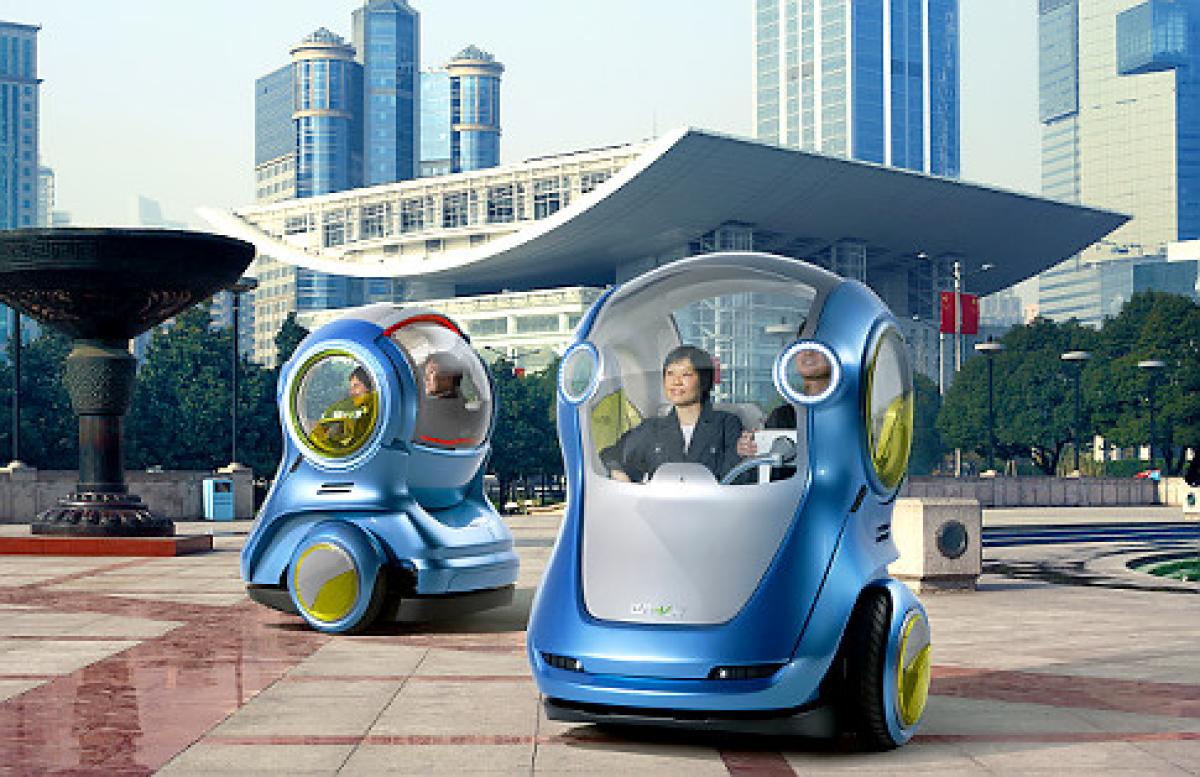Touchscreens are becoming a part of everyday life and this video by Corning shows some awesome ideas that the future may have in store for us. From the time we wake up until we go to bed, glass and touchscreens will be everywhere. Yes, it’s a blatant advertisement for Corning, but other companies like AT&T do videos like this fairly often. It’s interesting to see what directions they’d like to lead their companies in and it’s also fun to look back years later to see where they were right, which ideas never came to fruition, or which ideas ended up more impressive than originally thought. Video phones never caught on, for example, but webcams certainly did. The first idea is hardly surprising, which is that our windows will be made of photovoltaic glass, adding a green energy source to our homes. The glass also apparently alternates from dark to clear in order to keep sunlight out when you’re trying to sleep. Your large, wall-mounted flat-screen television will also become a multitasker, its touch screen allowing you to view various images at once; check the news, traffic, and weather in real time all at once. The bathroom will also apparently have a touchscreen so you can watch television and send text messages to friends, although I don’t really see that one catching on. 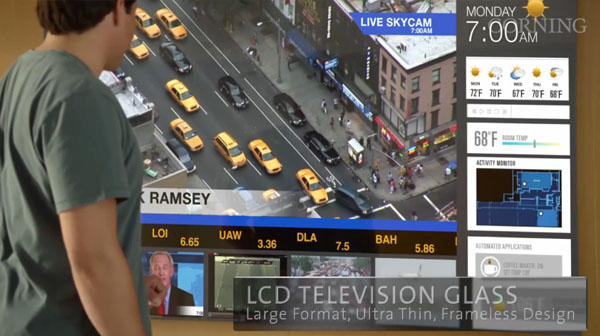 Corning then promotes sturdy glass to cover your kitchen counters and your stove. More touchscreen technology will let you fine-tune the stove top temperature and other oven functions. One idea that I really like is that the door of your refrigerator will also be a large touchscreen, letting you ‘hang’ various photos and videos or leave notes for the family. To my complete lack of surprise, video phone technology appears once again in this concept video. They also showcase how your kitchen counter top can be used much like the Microsoft Surface technology, letting it recognize objects placed on it, such as cell phones.
Corning then promotes sturdy glass to cover your kitchen counters and your stove. More touchscreen technology will let you fine-tune the stove top temperature and other oven functions. One idea that I really like is that the door of your refrigerator will also be a large touchscreen, letting you ‘hang’ various photos and videos or leave notes for the family. To my complete lack of surprise, video phone technology appears once again in this concept video. They also showcase how your kitchen counter top can be used much like the Microsoft Surface technology, letting it recognize objects placed on it, such as cell phones. 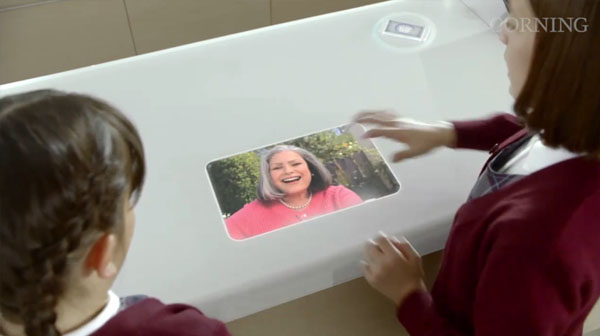 Automotive display glass will replace a stand-alone GPS and give a slick new look to your dashboard. The large-format display glass is weather resistant and showcased as replacing the big green road signs we’re all familiar with. Personally, I’d prefer the road signs remain non-electronic in case of power outages or other emergencies. However, the next part where the glass walls of bus stops become an interactive schedule and map is a fantastic idea.
Automotive display glass will replace a stand-alone GPS and give a slick new look to your dashboard. The large-format display glass is weather resistant and showcased as replacing the big green road signs we’re all familiar with. Personally, I’d prefer the road signs remain non-electronic in case of power outages or other emergencies. However, the next part where the glass walls of bus stops become an interactive schedule and map is a fantastic idea. 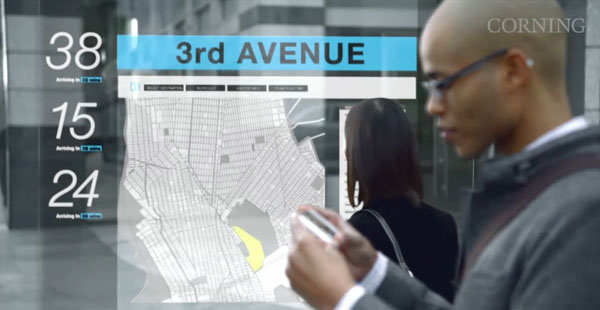 Business use is shown next, with a large glass touchscreen used by a designer, allowing him to not only conference (by video phone, of course) on the screen, but also use it as a workspace. Larger glass displays will allow high resolution images and videos to be displayed as advertisements, which is another idea I see becoming a reality. I could definitely see movie posters in theaters being replaced with something flashier. The day finishes with more interactive touchscreens for customers to get more information on products, flexible screens to replace static images like blueprints, and e-paper to replace paperback books. And, of course, Corning glass will allow you to have an enormous 3DTV in your living room.
Business use is shown next, with a large glass touchscreen used by a designer, allowing him to not only conference (by video phone, of course) on the screen, but also use it as a workspace. Larger glass displays will allow high resolution images and videos to be displayed as advertisements, which is another idea I see becoming a reality. I could definitely see movie posters in theaters being replaced with something flashier. The day finishes with more interactive touchscreens for customers to get more information on products, flexible screens to replace static images like blueprints, and e-paper to replace paperback books. And, of course, Corning glass will allow you to have an enormous 3DTV in your living room. 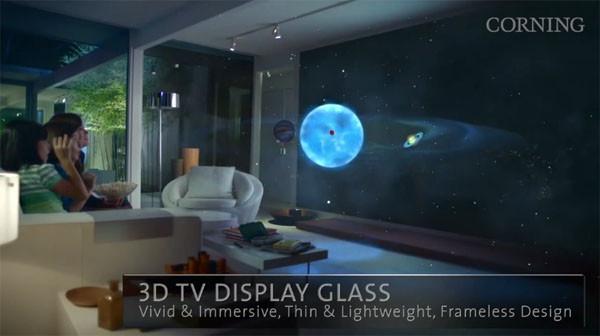 Some of the ideas are pretty out there, but Corning manages to keep most of them grounded in the realm of the believable, and it will be interesting to see how many of these become reality. As touchscreen technology becomes cheaper, we’ll see things like tablet computers drop in price, eventually followed by much larger, affordable screens to use in our homes and workplaces. For similar tech, check out the Windows Future Phone.
Some of the ideas are pretty out there, but Corning manages to keep most of them grounded in the realm of the believable, and it will be interesting to see how many of these become reality. As touchscreen technology becomes cheaper, we’ll see things like tablet computers drop in price, eventually followed by much larger, affordable screens to use in our homes and workplaces. For similar tech, check out the Windows Future Phone.




